Mad Hedge Biotech and Healthcare Letter
March 18, 2025
Fiat Lux
Featured Trade:
(WHEN THE MARKET GIVES BACK WHAT IT ONCE TOOK AWAY)
(ABT), (ISRG), (SYK), (BSX)
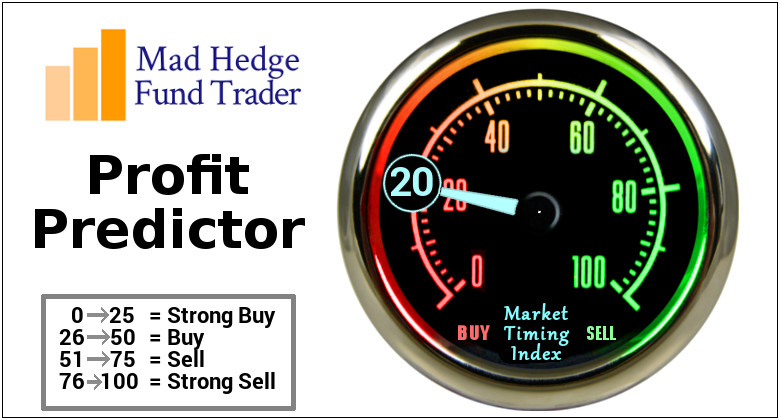
Mad Hedge Biotech and Healthcare Letter
March 18, 2025
Fiat Lux
Featured Trade:
(WHEN THE MARKET GIVES BACK WHAT IT ONCE TOOK AWAY)
(ABT), (ISRG), (SYK), (BSX)

If Wall Street had a confessional booth, I'd be first in line. "Forgive me, market gods, for I underestimated how quickly sentiment could shift."
When I last wrote about Abbott Laboratories (ABT), the market was treating this medical device powerhouse like last week's leftovers—despite growth that would make most CEOs weep with joy.
Fast forward a few months, and Abbott's stock has rocketed 25%, outpacing the broader medical device sector by about 20%.
It has kept stride with Boston Scientific (BSX) while leaving Intuitive Surgical (ISRG) and Stryker (SYK) eating dust.
This kind of market whiplash reminds me of reporting from Tokyo trading floors in the 1980s—fortunes changing direction faster than a day trader after espresso, fundamentals barely shifting while sentiment performed aerial gymnastics.
So what changed? Abbott became a flight-to-safety darling.
While economic storms gather, it sits comfortably in its non-elective procedure fortress, with minimal tariff exposure and a recent legal victory reducing liability concerns.
The irony? Sentiment has now sprinted ahead of business performance. While Abbott remains a leader, its valuation leaves little room for missteps.
And if I'm overpaying for med-tech, I might as well reach for Boston Scientific instead, where growth is comparable but the valuation looks more reasonable.
Abbott’s fourth-quarter results weren’t showstopping, but they were reassuring.
Revenue landed slightly below expectations in some areas, but crucial segments—like Medical Devices—delivered strong results. Meanwhile, profit margins surprised pleasantly, reinforcing Abbott’s operational strength.
Overall revenue grew 9% organically, with Medical Devices leading at 14% growth.
The Diagnostics division posted just 1% growth, but that’s misleading—strip out COVID-19 testing effects, and underlying growth jumps to 6%.
Margins impressed, too. Gross margin improved to 56.9%, and adjusted operating income climbed 10%.
Abbott even managed a narrow revenue beat while missing slightly on EBITDA and free cash flow, largely due to tax timing that caught most analysts off guard.
I've spent decades analyzing companies across multiple sectors, and I can tell you Abbott’s medical device business deserves genuine admiration.
It maintained 14% growth from start to finish—a remarkable consistency while competitors slowed from 9.5% to 9.2% growth during the same period.
Looking at the fourth-quarter specifics, Structural Heart shone with 23% growth, outpacing Boston Scientific’s 20% and Medtronic’s 12%.
The Diabetes segment posted an impressive 20% growth, more than doubling DexCom’s 8%. Even in slower segments like Cardiac Rhythm (7%) and Neuromodulation (8%), Abbott still outperformed key competitors.
The bottom line: Abbott is executing at an exceptional level across its device portfolio.
Even its Diagnostics business, with 6% underlying growth, holds up well against Roche’s 8% and substantially outperforms Siemens Healthineers’ anemic sub-1% and Danaher’s 2% contraction.
There are three developments that investors should be paying attention to.
First, Abbott’s exposure to new tariffs is minimal—just 5% of COGS from Mexico and 1% from China. This translates to a low single-digit EPS impact, barely a rounding error in today’s environment.
Second, TriClip may have more growth potential than I previously thought. Recent data from Edwards Lifesciences’ (EW) competing Evoque device showed no mortality benefit and only modest hospitalization improvements.
This lets Abbott position TriClip as the safer approach without sacrificing quality-of-life benefits.
Third—and most significant—Abbott won a crucial legal victory in October regarding its infant formula.
A jury unanimously found the company not at fault in a necrotizing enterocolitis case, though the judge recently granted a new trial.
With 10,000 cases still pending, this development could strengthen Abbott’s settlement position and potentially cap damages below $1 billion—substantial but manageable.
I expect slight moderation next year, but Abbott should still deliver 7% growth over the next three to five years.
Newer products like Lingo (blood glucose monitoring for non-diabetics) are performing well, with significant potential in Amulet and upcoming PFA and lithotripsy offerings.
On margins, I expect EBITDA to climb above 28% within four years, with free cash flow margins reaching high-teens to low-20%.
This should drive high single-digit to low double-digit FCF growth—performance that typically earns management teams effusive praise.
Valuation, however, is challenging after the recent surge. My former 5x revenue multiple only gets to around $125, while a more aggressive 6x model approaches $150—making me about as comfortable as a cat in a dog show.
I’m surprised by how quickly sentiment shifted on Abbott, likely due to investors seeking safety amid economic uncertainty.
Whether this outperformance has staying power remains uncertain, but Abbott is certainly delivering growth that matches or exceeds competitors across most business lines.
For now, I'm watching Abbott with the same fascination I once had for Sierra mountain expeditions—impressed by the ascent but keenly aware that the air gets thinner the higher you climb.
After all, what's that old market adage? Oh right—the view is spectacular, but nobody rings a bell at the top.

Mad Hedge Biotech and Healthcare Letter
August 27, 2024
Fiat Lux
Featured Trade:
(NOT ALL THAT GLITTERS IS LILLY)
(JNJ), (LLY), (CRSP), (ISRG)

I've been so busy chasing after Eli Lilly (LLY) and its trillion-dollar dreams that I nearly overlooked a gem in the making.
While everyone's obsessing over LLY's march towards that coveted $1 trillion market cap, there's another pharma giant that's been quietly chugging along, building value like it has for over a century.
I'm talking about Johnson & Johnson (JNJ). You know, that little company that's only been around for 138 years.
I understand that JNJ isn’t as exciting as the likes of Crispr Therapeutics (CRSP) with their fancy gene editing therapies, or Intuitive Surgical (ISRG) with their robotic surgeons, but, let me tell you, sometimes boring is beautiful – especially when it comes with a 3% dividend yield and a rock-solid business model.
Let's break it down, shall we?
First off, JNJ isn't sitting on its laurels. Just last week, they dropped $1.7 billion to snatch up a private heart-device company. That's not chump change, even for a behemoth like JNJ.
And speaking of big moves, the FDA just gave them the green light for a chemotherapy-free lung cancer treatment.
We're talking about Rybrevant plus Lazcluze, which showed a 30% reduction in the risk of disease progression or death compared to AstraZeneca's (AZN) offering.
That's not just incremental progress – that's potentially life-changing stuff for patients.
But they’re not stopping there. They're also shelling out $600 million upfront (with potential milestone payments up to $1.1 billion) for V-Wave, a company making shunts for heart failure patients.
This deal's expected to close before the year's out, beefing up JNJ's already impressive MedTech division.
Now, let's talk numbers. JNJ's current market cap is sitting pretty at just under $400 billion. Sure, it's not in Lilly's $850 billion stratosphere, but remember – slow and steady wins the race.
And speaking of winning races, JNJ was the global leader in pharmaceutical sales last year, raking in $85 billion. That's a cool 30% higher than their closest competitor, Roche (RHHBY).
But here's where it gets interesting for value hunters. JNJ's currently trading at an enterprise value of 12.8 times forward EBITDA. In English? It's reasonably priced compared to its peers.
Even better, it's trading near the bottom of its five-year range for forward P/E ratio, EV-to-EBITDA, and price-to-free cash flow. Translation: This stock's on sale, folks.
Now, I know what some of you are thinking. "But what about those talcum powder lawsuits?" Fair question.
JNJ's looking at potentially settling around $6.5 billion worth of claims. That's not a small amount, even for these guys.
But here's the kicker – they've got over $25 billion in cash on hand and generated about $19 billion in free cash flow over the last 12 months. They can take the hit and keep on ticking.
Let's talk products. Stelara, Tremfya, Darzalex, Erleada – these aren't just random drug names. They're cash cows for JNJ. And with a diverse portfolio where no single drug accounts for more than 13% of total sales, they're not putting all their eggs in one basket.
Still, I'm not saying JNJ is going to double overnight. This isn't some flashy tech stock riding the AI hype wave.
But for those of us with a long-term horizon and a love for steady income, JNJ looks mighty attractive.
Think about it – they've raised their dividend for over six decades straight. That's longer than some of you reading this have been alive.
And with a 77% payout ratio, they've got room to keep that streak going.
Sure, over the past decade, JNJ's total return of 106% might not set your hair on fire. It lags behind the S&P 500's 234% and even the Health Care Select Sector SPDR Fund ETF's (XLV) 189%.
But remember, past performance doesn't always guarantee future results.
Here's my take: JNJ isn't for the get-rich-quick crowd. It's for investors who appreciate a good night's sleep knowing their money's in a company that's weathered world wars, depressions, and yes, even lawsuits.
Will JNJ hit that trillion-dollar mark? I'd bet my last bottle of Tylenol on it. It might take a decade, but hey, good things come to those who wait.
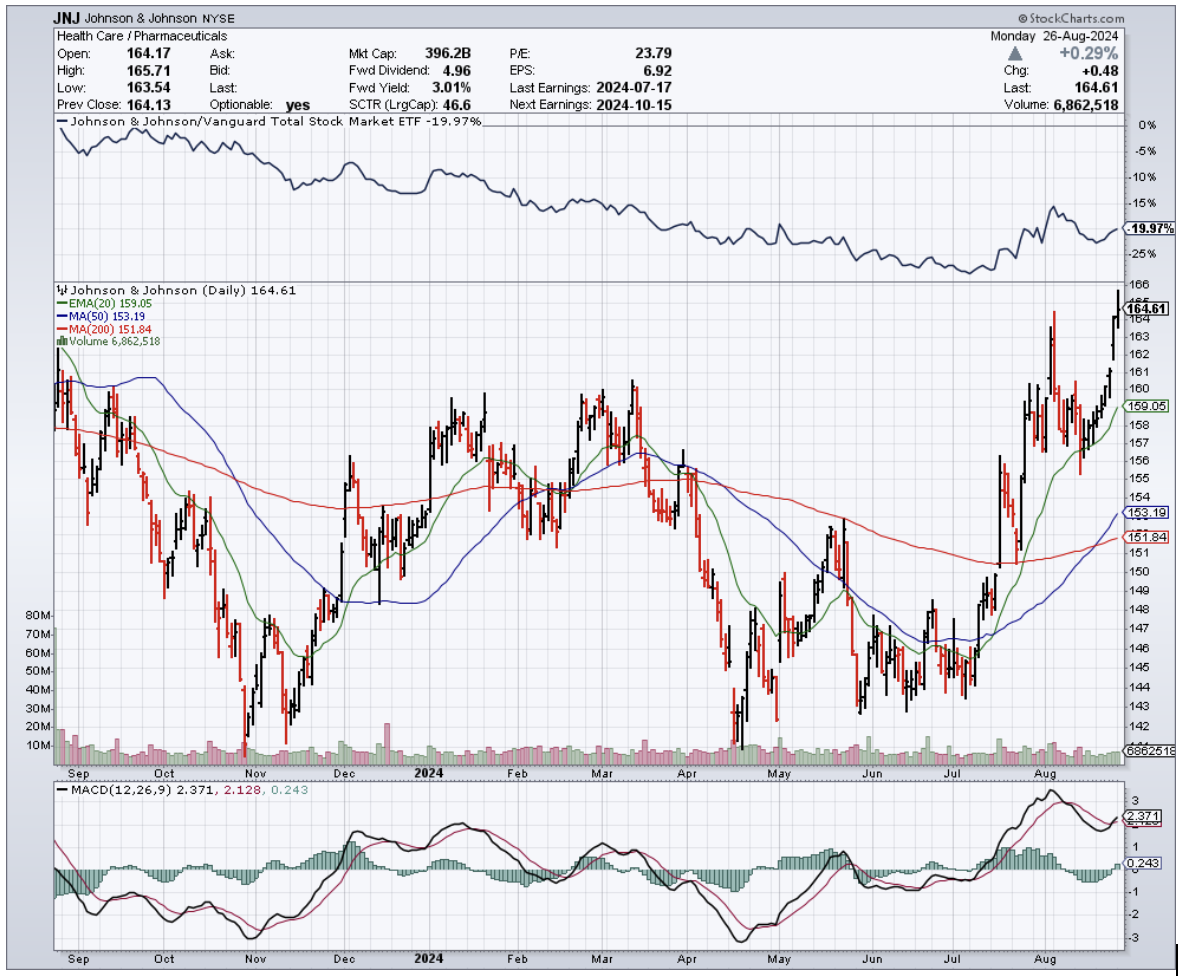
Mad Hedge Biotech and Healthcare Letter
September 28, 2023
Fiat Lux
Featured Trade:
(TIPPING THE SCALES)
(NVO), (LLY), (PODD), (TNDM), (DXCM), (RMD), (INSP), (MDGL), (ISRG), (AKRO), (ETNB)

The pharmaceutical world is buzzing, and it’s all thanks to the groundbreaking obesity drugs from Novo Nordisk (NVO) and Eli Lilly (LLY). In my previous newsletter, I delved into the massive potential of these new treatments, and it sparked a flurry of discussions. So, this time, I want to peel back the layers and explore how these advancements affect other companies within the same market.
After all, their emergence creates a paradoxical narrative, a dance of shadows and lumens. These drugs, renowned as the modern panacea for the obesity crisis, have catapulted the companies behind them into unprecedented valuations, making them luminaries in a market awash with investors hungry for the next big thing.
The enthusiasm surrounding these drugs is not unfounded; they are pivotal in treating type 2 diabetes and are seen as the desperately needed solution to the widespread obesity crisis. The groundbreaking medications introduced by Novo Nordisk and Lilly are enabling individuals to lose approximately 15% to 20% of their body weight, with Wall Street anticipating the combined annual sales of these revolutionary drugs to surpass $40 billion by the close of this decade.
However, the shadows of GLP-1s cast a contrasting pallor on companies that burgeoned in tandem with America’s expanding waistlines.
Firms like Insulet (PODD) and Tandem Diabetes Care (TNDM) are witnessing a decline of 40% and 50% in their values this year, respectively.
Similarly, DexCom (DXCM), the frontrunner in glucose monitoring, has experienced a 16% dip, and ResMed (RMD), the stalwart in CPAP machines treating sleep apnea, has seen its stock plummet by 30%. Inspire Medical Systems (INSP) and Madrigal Pharmaceuticals (MDGL) have also encountered significant drops in their shares.
These companies, once the darlings of the medical stock market due to their escalating sales growth, are now facing the brunt of a shifting investor focus. This is because the investment community is envisioning a future with a reduced prevalence of diabetes and sleep apnea and is consequently retracting their stakes in these stocks, leaving companies and investors navigating through a sea of uncertainties.
By early spring, the potential impact of widespread GLP-1 usage became the focal point of strategic discussions at numerous hedge funds. That led to a shift as some started withdrawing from stocks like DexCom and Madrigal, subsequently opting to short-sell these shares. The broader market tuned in this summer.
A case in point is Intuitive Surgical (ISRG), a leader in surgical robotics, which noted during its earnings call that a preference for trying GLP-1s was leading to a deferment in weight-loss surgeries. Although these procedures constitute a minor segment of robotic surgeries, they have been instrumental in driving Intuitive’s growth.
GLP-1s have also affected the demand for insulin injections. Recently, endocrinologists have suggested that GLP-1s could potentially delay the transition to insulin for a significant portion of Type 2 patients. This revelation triggered a recalibration of sales forecasts and stock price targets, with Insulet experiencing a downgrade in both target price and rating.
Meanwhile, the growth prospects of glucose monitor manufacturer DexCom in the Type 2 market remain positive. The integration of glucose monitors with GLP-1s is anticipated to become a prevalent trend among diabetic patients. Despite a temporary rally in DexCom stock, the lingering question remains whether the expanding use of GLP-1s will eventually reduce the demand for glucose monitoring.
Vendors of sleep apnea devices, such as ResMed and Inspire Medical, are also conveying to investors the minimal impact of GLP-1s on their markets. However, the debate continues on the intrinsic link between obesity and sleep apnea and the potential repercussions of GLP-1s on the entire sleep apnea spectrum. As market dynamics continue to shift and the ripple effects of GLP-1s become the focal point of discussions, more and more questions about the future landscape of obesity-associated medtechs arise.
The positive developments in GLP-1s have also cast a shadow over another sector: liver medications.
In June, revelations about Lilly's investigational drug, retatrutide, sent ripples through the sector. The drug not only facilitated a 24% weight reduction in subjects but also significantly diminished fat levels in their livers. This development impacted the stock values of companies like Madrigal Pharmaceuticals, Akero Therapeutics (AKRO), and 89bio (ETNB), pioneers in crafting remedies for the fatty liver condition known as NASH. While it remains to be seen how much these stocks will fall, it’s evident that their decline has already started.
The market is a tumultuous sea of uncertainties, with companies and investors meticulously navigating the evolving dynamics. For the astute investor, the key is to learn how to strike a balance between the old and the new.
The allure of GLP-1s might lead to a reevaluation of the medtech sector’s prospects, but companies like Insulet, ResMed, and Inspire still hold resilience in a GLP-1-dominated landscape.
Ultimately, it’s about understanding the intricate push and pull of shadows and light. The wise investor doesn’t just follow the light; they also understand the shadows, learning to see the opportunities lurking within.
So, delve deep, recalibrate your strategies, and remember, the paradox is not a roadblock; it’s a guidepost to new horizons in pharmaceutical innovation.
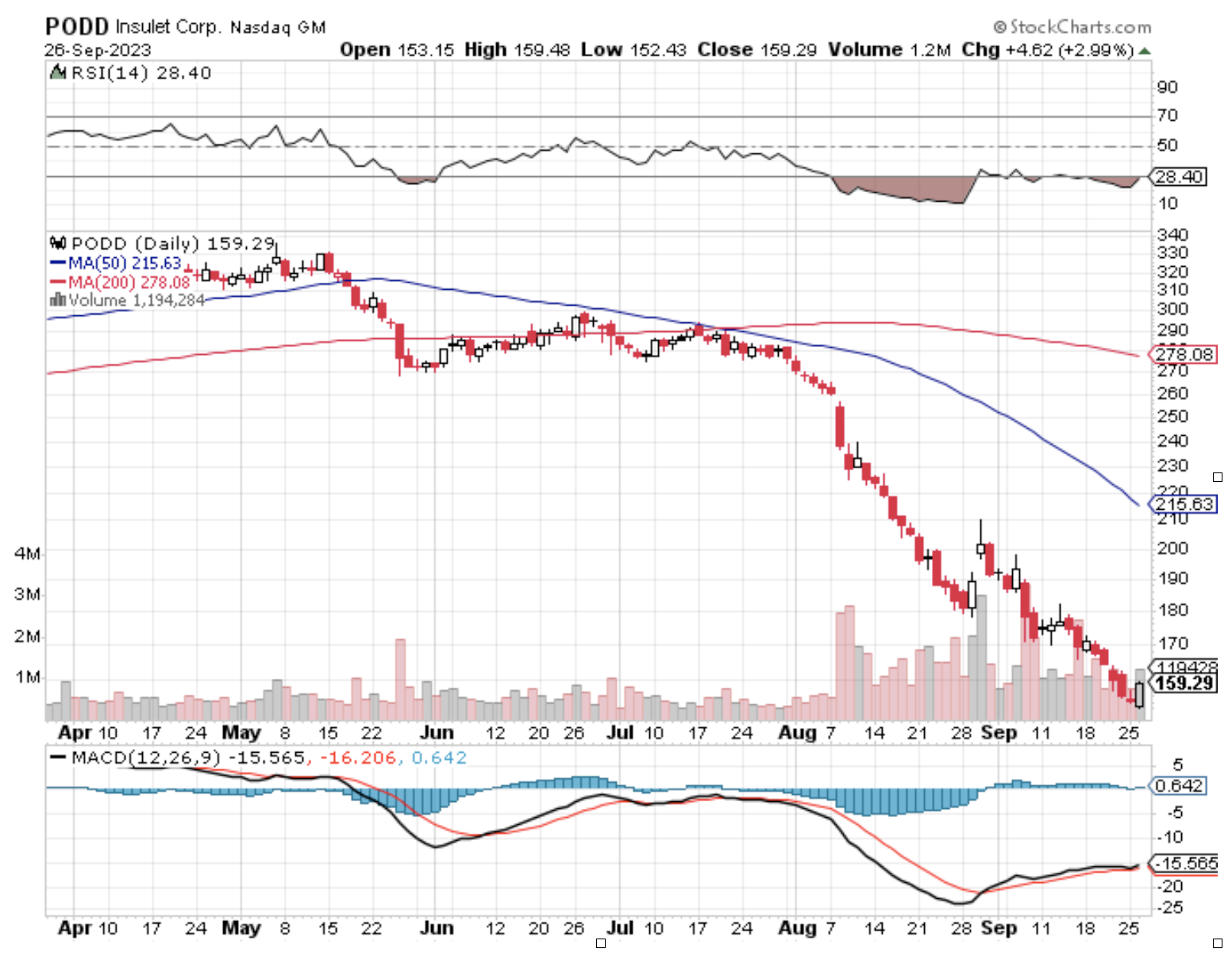
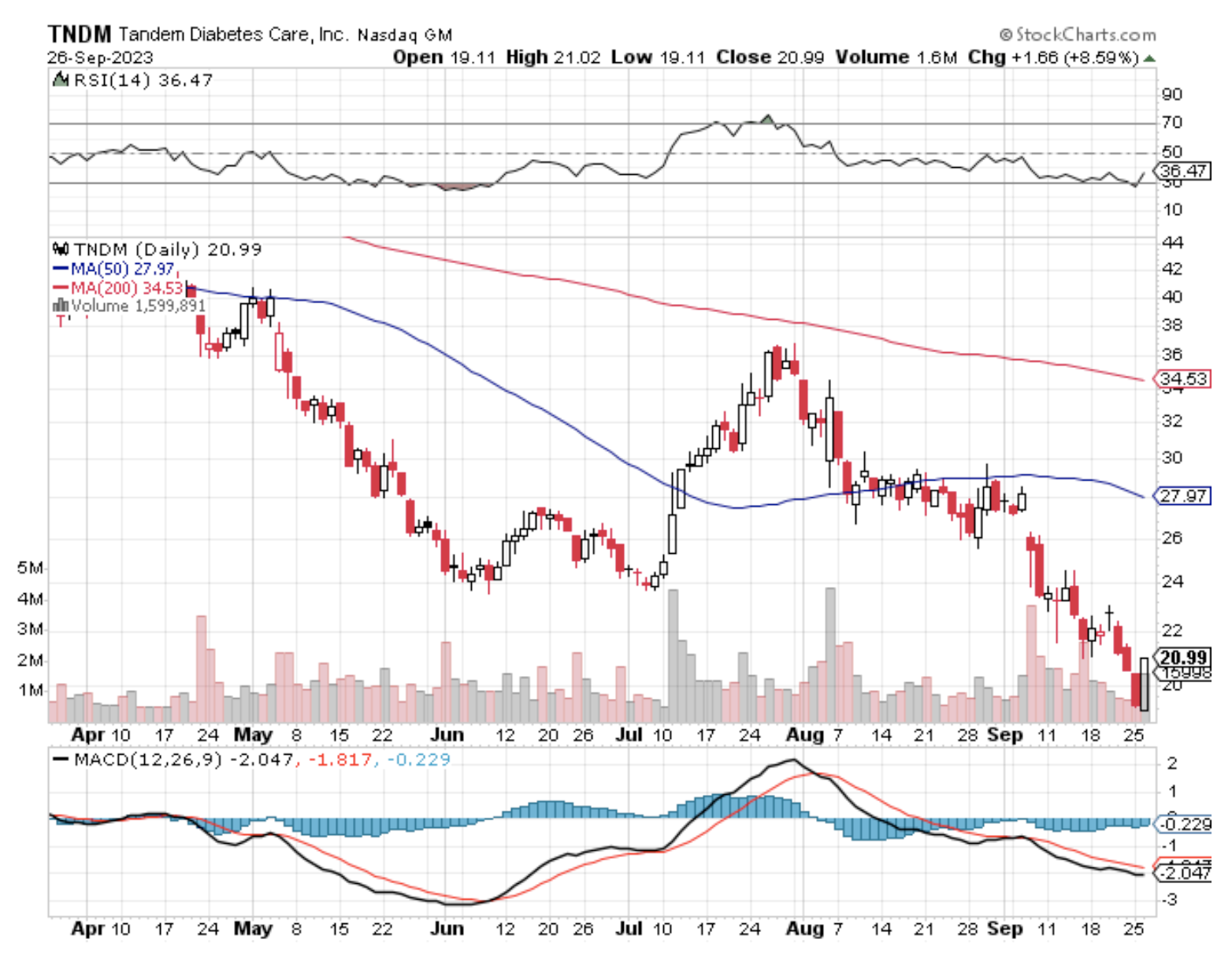
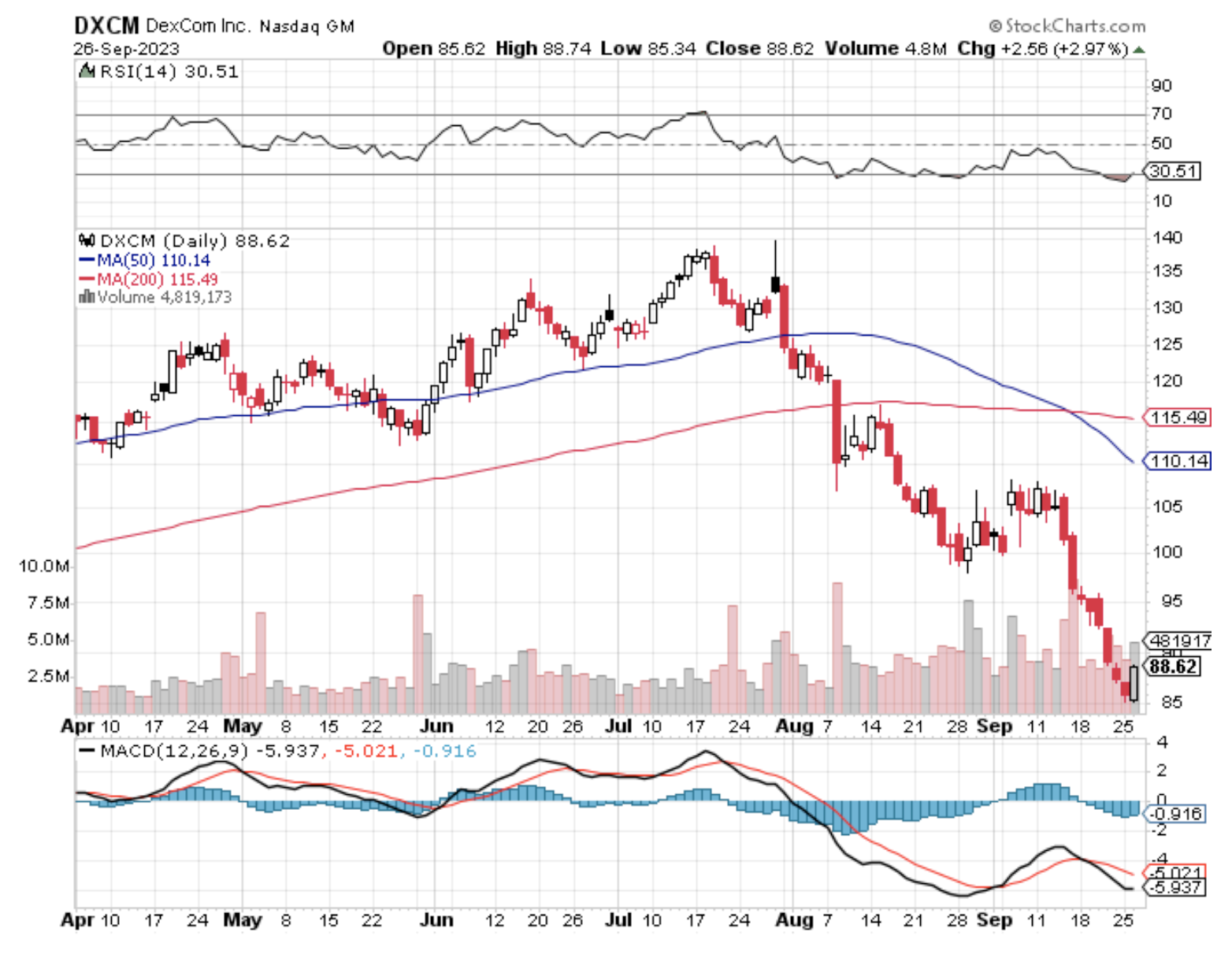
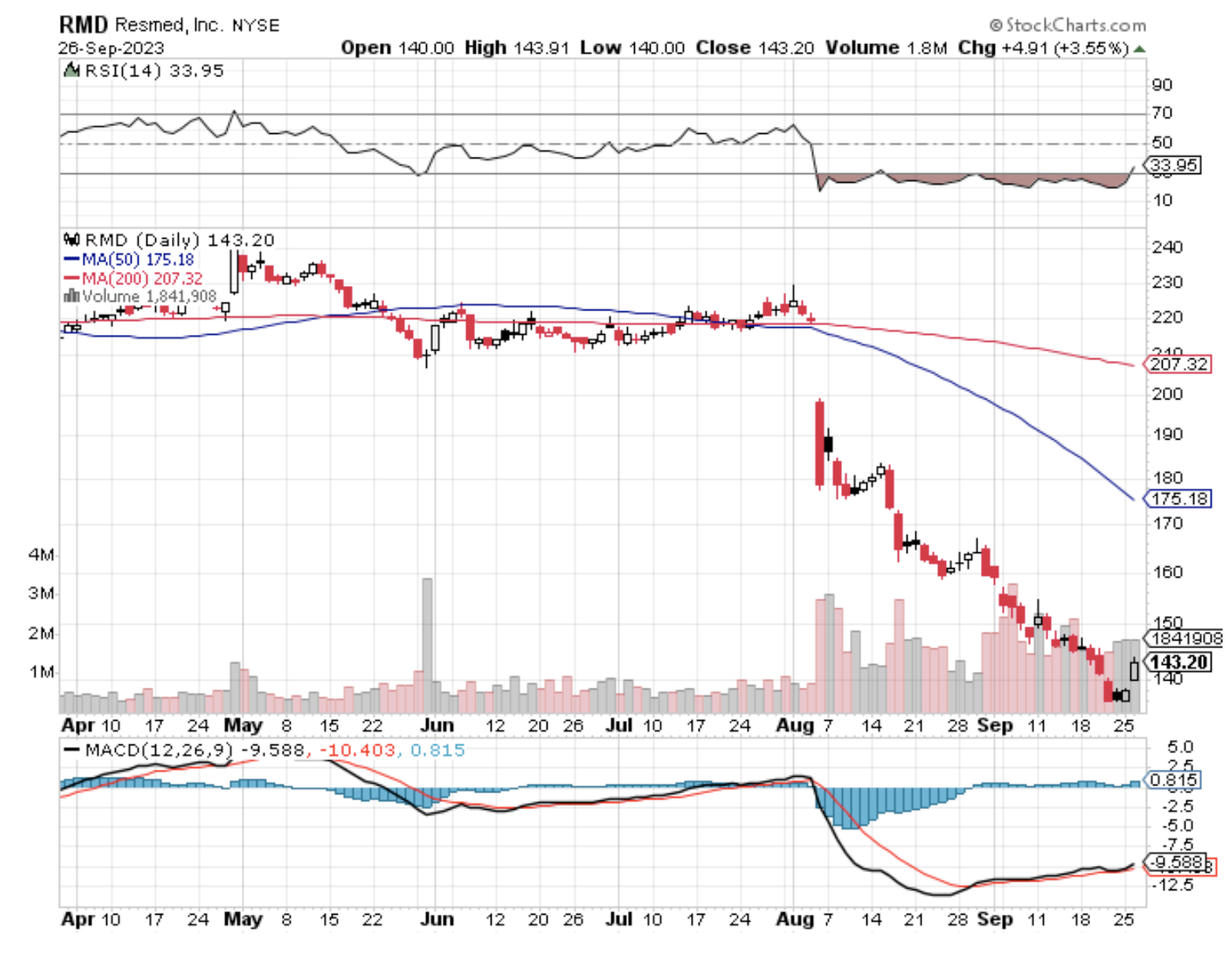
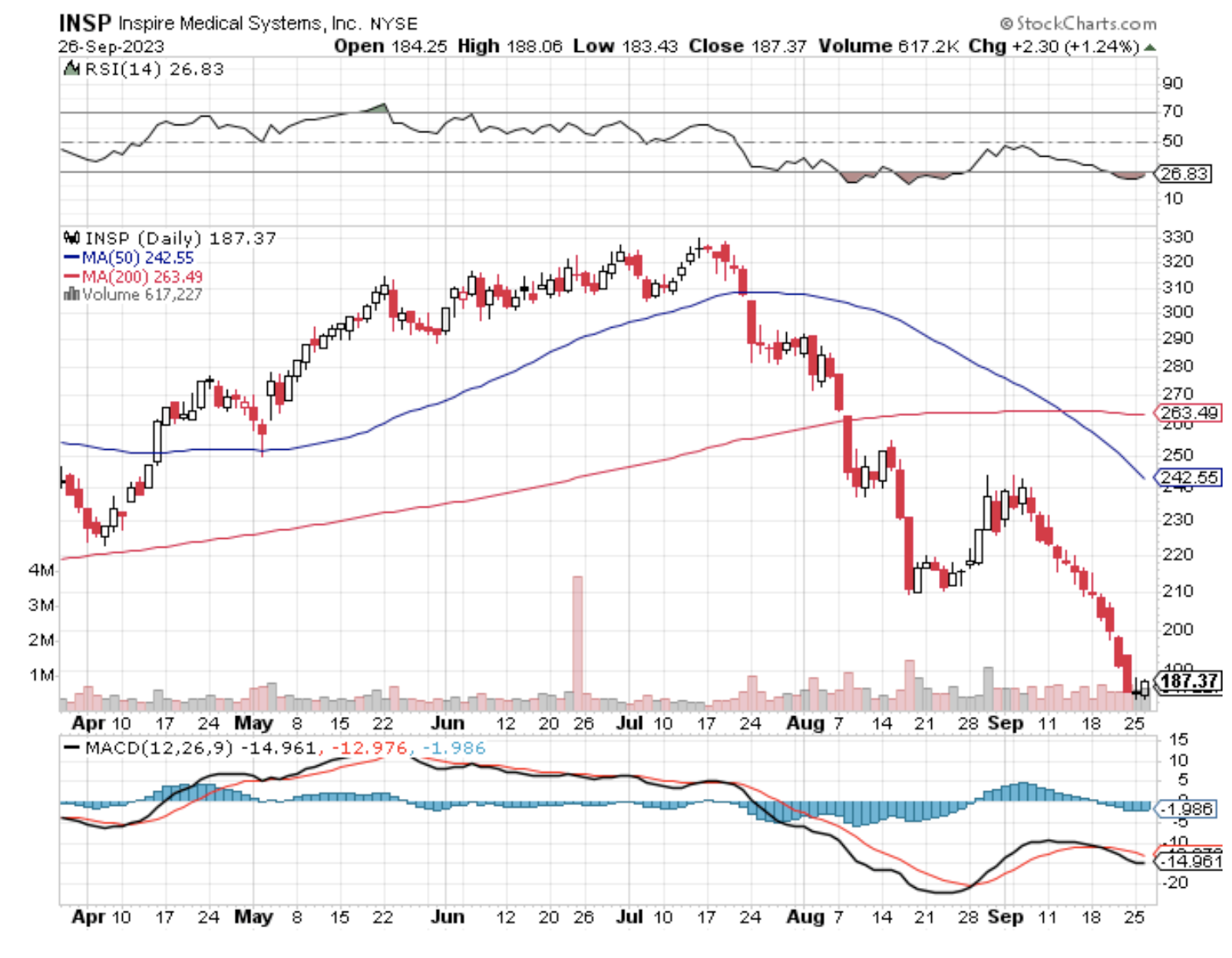
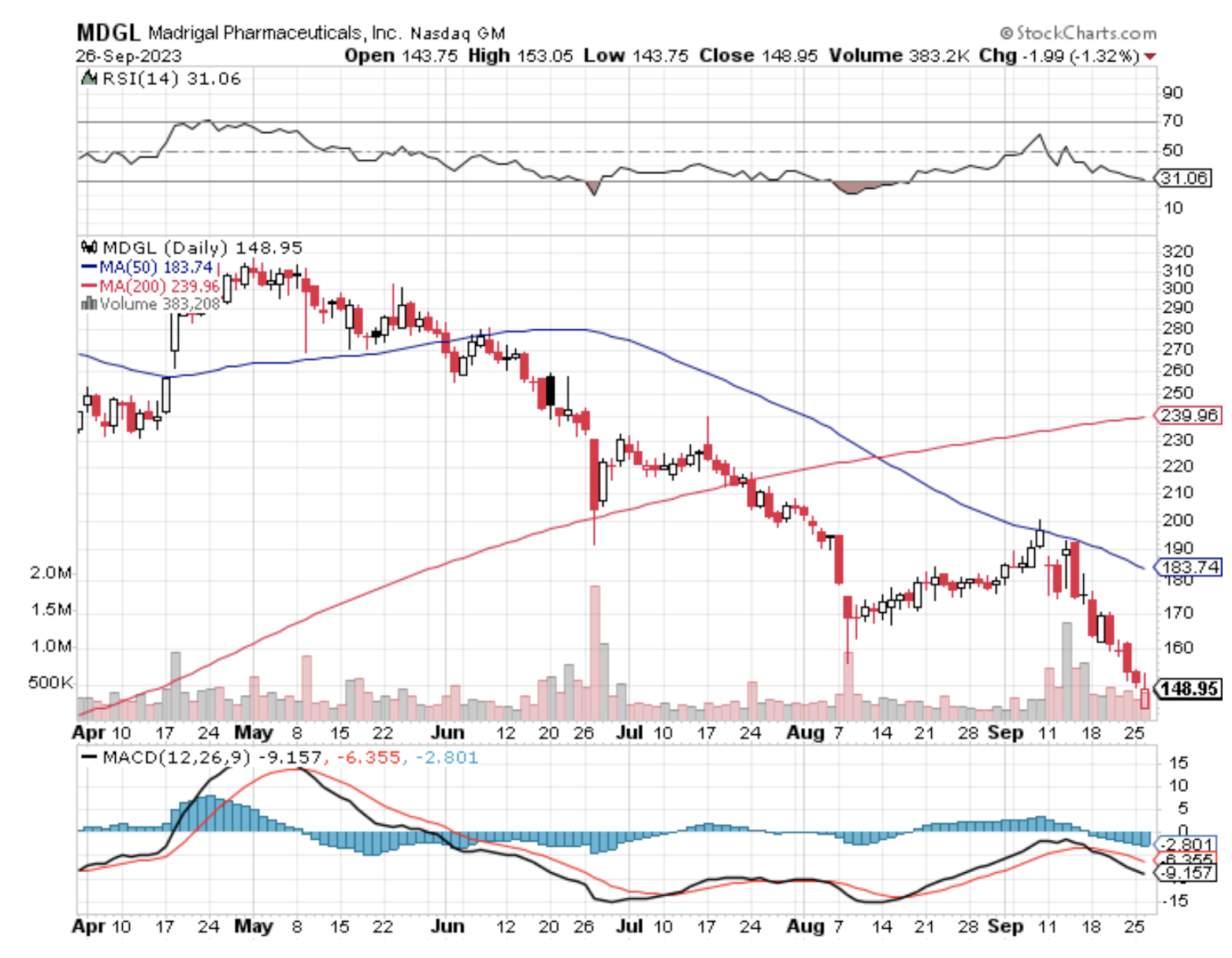
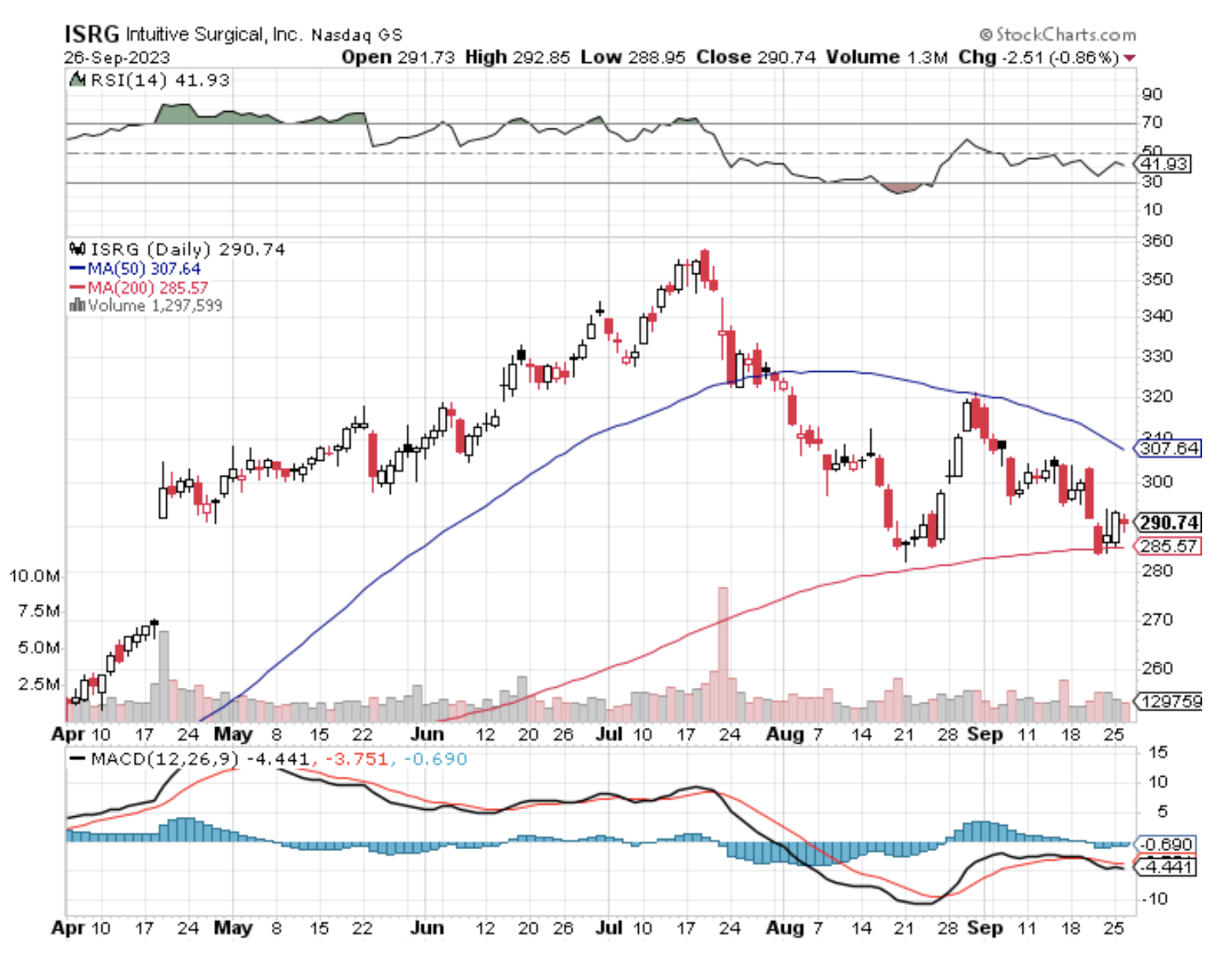
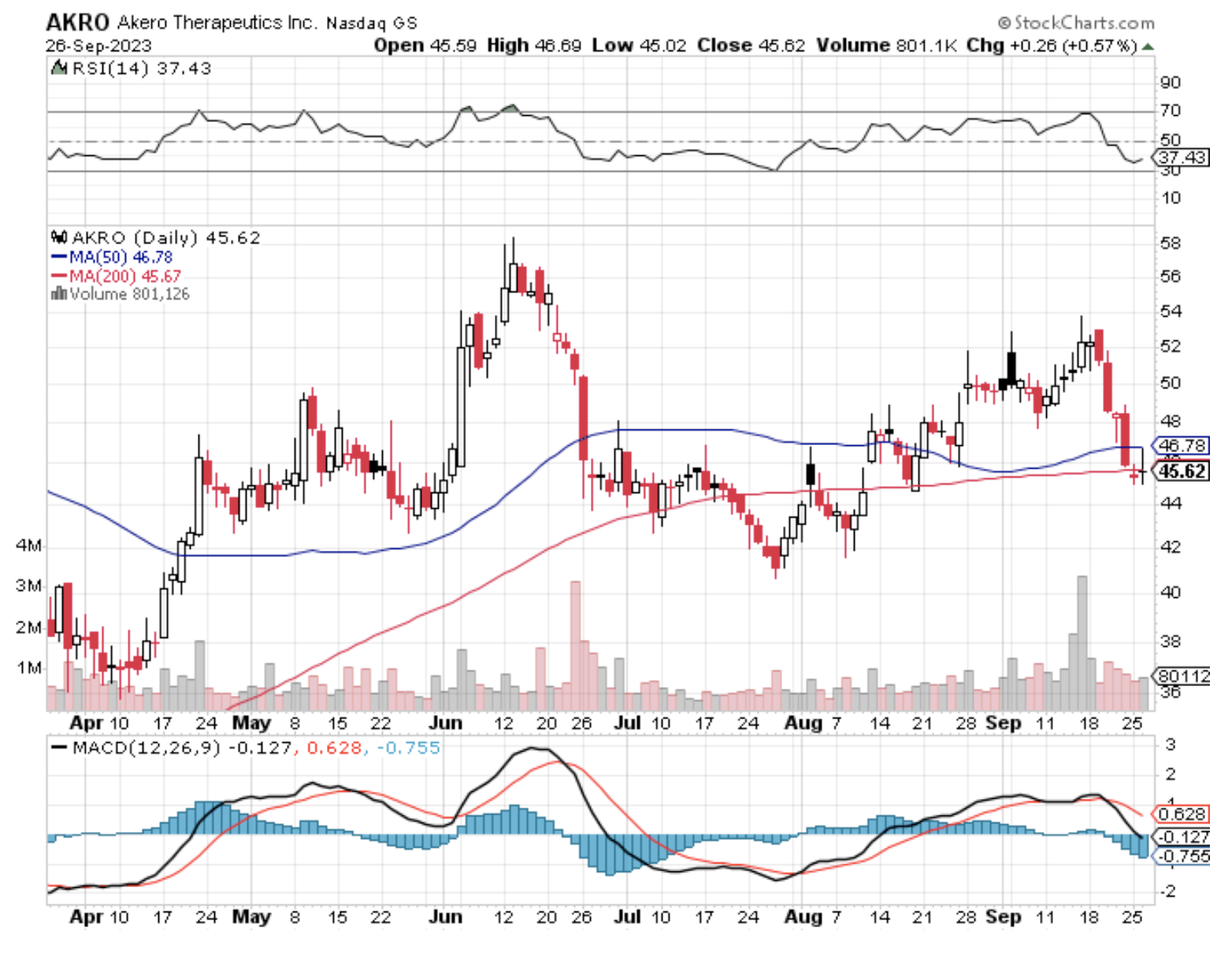

Global Market Comments
May 10, 2023
Fiat Lux
Featured Trades:
(FRIDAY MAY 19, 2023 BOCA RATON, FLORIDA GLOBAL STRATEGY LUNCHEON)
(WHY THE ROBOTICS INDUSTRY IS RAINING GOLD)
(GM), (ISRG), (ABB), (TER), (YASKY), (FANUY), (AMZN), (BMWYY), (KUKAF)
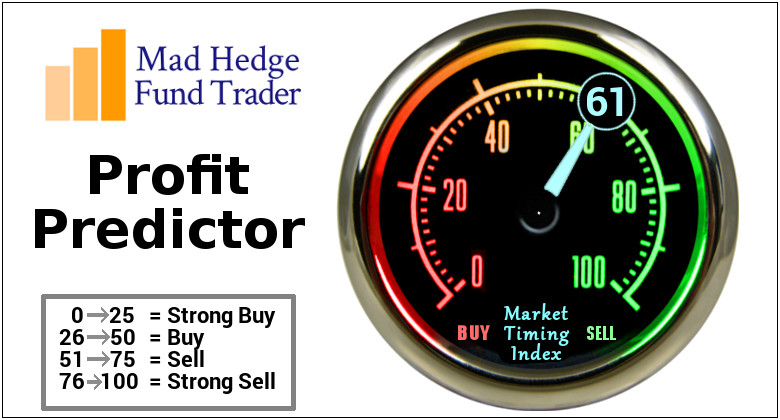
CLICK HERE to download today's position sheet.
We need to look back to the ancient world to discover the origins of robots. During the industrial revolution, humans developed the structural engineering capability to control electricity so that machines could be powered with small motors.
The idea of the humanoid machine was developed in the early 20th century. The first uses of modern robots were in factories as industrial robots. A car company - General Motors - paved the way here first.
General Motors (GM) introduced the first industrial robot, called "The Unimate," back in 1959. It was just a simple hydraulic arm that did some repetitive welding tasks. Seven years later, "The Unimate" made a friendly appearance on The Tonight Show with Johnny Carson, where it played not such a bad imitation of golf.
As technology has improved and become cheaper, robots have become more prevalent. Robot sales in North America have hit record highs for the last three consecutive quarters. We now encounter robots in our daily lives in various forms: they vacuum floors (Zoomba), mow lawns, make coffee, and even provide companionship (see the movie Her).
Additionally, they help combat supply chain disruptions and inflation. Automation allows employees to focus on higher-value tasks and work efficiently. Robots now work successfully alongside humans.
So, the robotics industry looks like a savvy investment.
Why?
The global robotics market is expected to grow at an impressive CAGR of 23% from 2021 to 2026, eventually hitting a cool $186.7 billion by the end of that span.
The range of robotics applications continues to expand at lightning speed and has become evident in everything from manufacturing to healthcare, logistics to agriculture, and beyond. It's all driven by many factors behind the scenes, like advancements in AI and machine learning, growing demand for automation, and improvements in sensor technologies. More and more companies are tapping into robotics R&D, and the stock market is taking notice.
One company that is particularly well-positioned to benefit from the growth of robotics is Intuitive Surgical (ISRG).
Intuitive Surgical is a pioneer in the field of robotic surgery, with its flagship da Vinci Surgical System being used in over 7 million surgeries worldwide. The company has a market cap of $125.6 billion, and its stock has been surging in recent years, growing by over 800% in the last decade.
Presently, about half of all robotic procedures are used in urological and gynecological procedures, but robotic surgery has applications across the medical field. Currently, only 3% of all surgeries are done robotically, so there is a lot of potential for growth in this area.
Another company that benefits from the growth of robotics is ABB (ABB), a Swiss-Swedish multinational corporation specializing in robotics, power, and automation technology.
ABB has a market cap of $67.2 billion and is a leader in industrial robotics, with applications ranging from welding and painting to packaging and palletizing. The company's robotics division has seen double-digit growth in recent years, and it is well-positioned to capitalize on the continued expansion of the global robotics market.
Of course, the growth of the robotics industry isn't limited to these two companies. Other publicly traded firms that are likely to benefit from this trend include Teradyne (TER), Yaskawa Electric (YASKY), and Fanuc (FANUY), among others.
Logistics is also benefiting from robotics. As online shopping and same-day delivery become more popular, companies need help to keep up and must find ways to streamline their supply chains and reduce costs.
Robotics play a major role in solving these problems. Autonomous robots can zip around warehouses, grab products off shelves, and even help load and unload trucks.
A company that is leading the charge in this area is Amazon (AMZN).
Amazon has been investing heavily in robotics for years, and its acquisition of Kiva Systems in 2012 has been instrumental in the company's ability to scale its logistics operations. The company now has over 200,000 robots deployed in its warehouses, and it is constantly experimenting with new ways to use robotics to increase efficiency and reduce costs.
An additional reason that robots are becoming more in demand involves the transportation industry.
People keep coming up with state-of-the-art ways to make cars and trucks, and these new production technologies require lots of robots. Moreover, factories worldwide are getting upgrades, so they need revolutionary robots to help them improve.
In 2020, BMW AG (BMWYY) and industrial robots and systems manufacturer KUKA (KUKAF) signed a deal to provide more than 5,000 robots to new production lines and factories worldwide. KUKA stated that these industrial robots would be utilized globally at the BMW Group's overseas manufacturing facilities to produce present and future vehicle models.
Industrial robot costs have become much more reasonable over the past thirty years. They have dropped by an average of 50%. This decrease makes adopting robotics technology in various industries a feasible option.
Robots are not replacing factory workers. Instead, they're working alongside their human counterparts to free up their time for more critical tasks. The Institute for Operations Research and the Management Sciences backs the idea that investments in robotics technology equaled firm employment.
Science fiction robotic concepts have arrived in our modern-day environments and investors will now be able to profit handsomely from this industry.
In the wise words of Warren Buffett, "Opportunities come infrequently. When it rains gold, put out the bucket, not the thimble."
While the growth of robotics may lead to job displacement in some sectors, it's important to remember that this is a natural evolution of technology. As new jobs are created in various areas, such as robotics engineering and data analysis, we must adapt and embrace these changes.
In the meantime, savvy investors can capitalize on the continued expansion of the robotics market. Companies such as Intuitive Surgical, ABB, and Amazon are just a few examples of publicly traded firms well-positioned to benefit from this trend.
However, let's remember that the robotics industry is still in its early stages, and there are bound to be new players emerging in the coming years.
As with any investment, it's essential to do your due diligence and invest wisely. But the rewards could be massive for those willing to take the risk. So take Buffett’s advice and put out the bucket, to catch some of that golden rain.
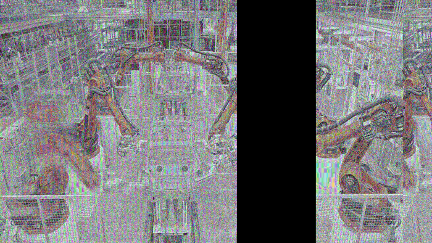
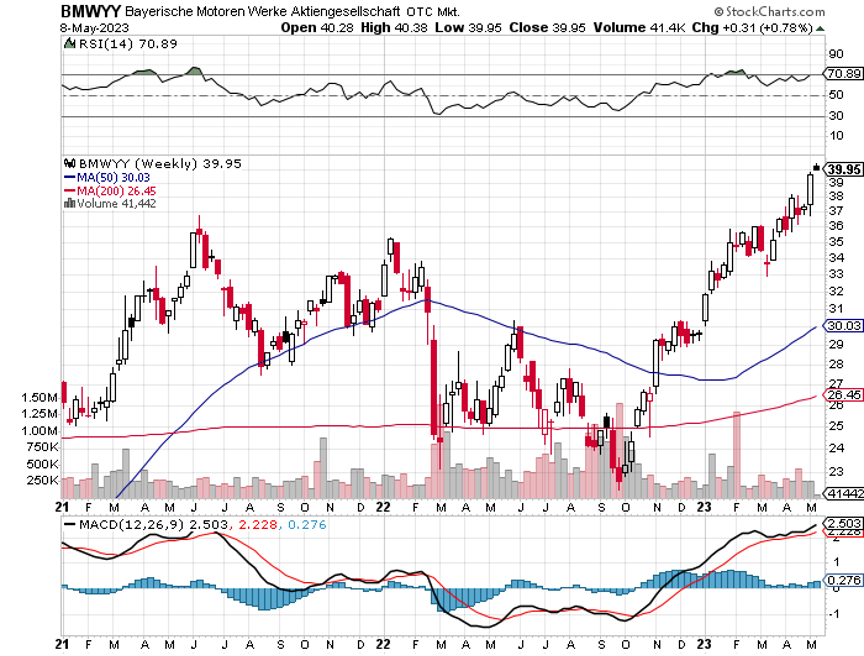
Mad Hedge Biotech and Healthcare Letter
March 7, 2023
Fiat Lux
Featured Trade:
(A PIONEERING LEADER IN THE HEALTHCARE WORLD)
(ISRG)
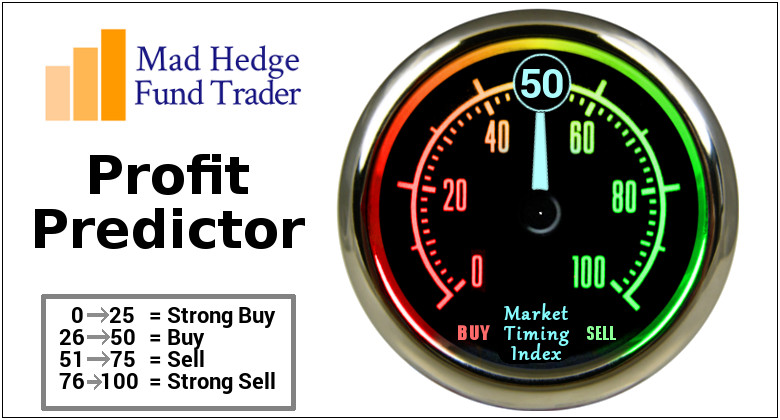
The United States allocates a jaw-dropping 18% of its GDP on healthcare alone. That comprises twice the amount spent by other industrialized nations. Despite that, the US has the shortest life expectancy among the rest of the developed countries and the highest number of recorded maternal deaths.
A potential reason for this disappointing report is that a considerable sum of the capital gets invested in administrative expenses, including insurance companies, defensive care (aka protection for doctors against litigation), and the maintenance of a majorly disconnected system that involves an unparalleled number of varying payers, and a long list of billing staff and specialists. As a result, the healthcare system is plagued with frustrating inefficiencies and an astounding absence of coordination.
In fact, the administrative expenses of America’s National Health Expenditure (NHE) reach a total of about $1 trillion annually. That is roughly 30% of its overall spending.
This staggering amount has paved the way for artificial intelligence (AI) to enter the fray. If AI can offer tangible solutions to administrative issues, the US could save a quarter of its yearly spending on healthcare.
While that is promising, the benefits of AI won’t end there.
The convergence of AI, robotics, and surgery is an exciting area of technological advancement that will likely shape the future of medicine in the coming decade. AI and robotics are already being used in surgery to improve the accuracy and precision of procedures, reduce the risk of human error, and enhance patient outcomes.
In the case of surgeries, a critical question to ask your surgeons is, “How many times have you performed this specific procedure?”
Undoubtedly, surgeons who have done the surgery more times are considered the best options. They have presumably witnessed every potential variation and gained valuable experience when things go awry and, of course, how to remedy the situation. Typically, an experienced surgeon will perform hundreds of procedures every year.
But how would you feel if you discovered that your surgeon is an “AI-robotic platform” that has performed millions of operations yearly?
This AI-robot system would offer a multitude of benefits. First, it can assess the surgical field via infrared and ultraviolet, as well as conduct any procedure with incredible precision and dexterity. Second, the robot won’t be a victim of “human factors” like taking too much coffee, not getting sufficient rest or sleep, or arguing with their spouse hours before the surgery. Third, the platform could offer ways to eventually demonetize and democratize the procedure, enabling thousands of hospitals across the globe to access the technology.
So far, though, there’s no AI capable of performing 100% autonomous procedures. The closest we’ve gotten to date was in 2022 when a group of researchers at Johns Hopkins successfully created STAR or “Smart Tissue Autonomous Robot.”
STAR could perforce a laparoscopic surgery on a pig without any assistance from a human operator or surgeon. This makes the system not only unique but also extremely promising because it needs minimal to no human guidance.
Meanwhile, until this technology becomes completely available, the only company closest to this advancement is Intuitive Surgical (ISRG).
Intuitive’s platform, an “Avatar Robotic System” called da Vinci, allows an experienced surgeon to perform the surgery remotely in what they call “tele-operation mode.” Thus far, more than 60,000 surgeons have completed over 10 million surgical procedures via the da Vinci platform.
Another promising product in Intuitive’s portfolio is called the Ion Endoluminal System.
Intuitive's Ion Endoluminal System is a robotic-assisted platform designed for minimally invasive lung biopsy. It is intended to provide a minimally invasive method for obtaining lung tissue samples that can be used to diagnose lung diseases such as lung cancer.
Basically, the Ion Endoluminal System is made up of a flexible robotic catheter inserted through the patient's mouth or nose and guided to the target area of the lung via real-time imaging. A small needle on the catheter can be used to collect tissue samples from the lung without the need for a surgical incision.
The system guides the catheter to the precise location where the tissue sample is required using advanced imaging technologies such as ultrasound and electromagnetic navigation. The system also includes a workstation, allowing the physician to control the catheter and view the imaging results in real-time.
The Ion Endoluminal System has several advantages over traditional biopsy methods, including less trauma to the patient, shorter recovery times, and the ability to obtain tissue samples from difficult-to-reach areas of the lung. Overall, the Ion system is a significant advancement in the field of minimally invasive lung biopsy, with the potential to improve lung disease diagnosis and treatment.
Robot-assisted medical procedures beat the shaky hands of human surgeons. That thesis has not been proven wrong since Intuitive went public in 2005. The company has emerged as the apparent market leader with its “razors and blades” model that ensures it generates a recurring revenue stream as its platforms are used to perform surgeries.
At this point, Intuitive controls about 805 of this multi-billion-dollar market worldwide. In 2022, the surgical robotics market was valued at $8.5 billion, with this sector projected to exhibit tremendous growth to reach over double its valuation to $18 billion by 2027.
If you’re searching for a profitable business in a booming healthcare industry segment, Intuitive appears to be a no-brainer stock to add to your portfolio and hold for the long term. I suggest you buy the dip.
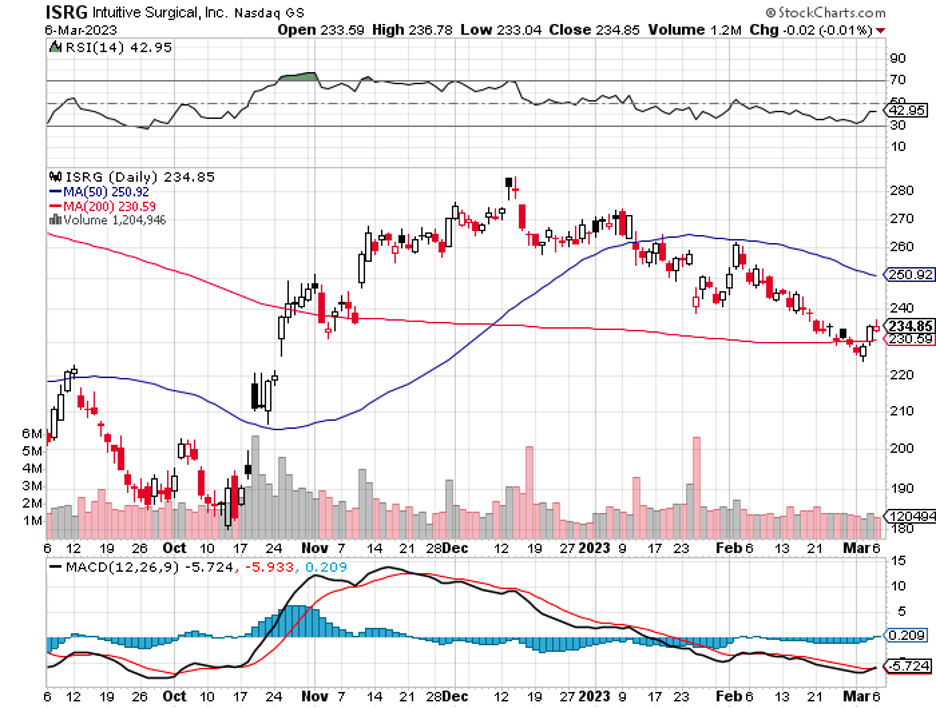
Legal Disclaimer
There is a very high degree of risk involved in trading. Past results are not indicative of future returns. MadHedgeFundTrader.com and all individuals affiliated with this site assume no responsibilities for your trading and investment results. The indicators, strategies, columns, articles and all other features are for educational purposes only and should not be construed as investment advice. Information for futures trading observations are obtained from sources believed to be reliable, but we do not warrant its completeness or accuracy, or warrant any results from the use of the information. Your use of the trading observations is entirely at your own risk and it is your sole responsibility to evaluate the accuracy, completeness and usefulness of the information. You must assess the risk of any trade with your broker and make your own independent decisions regarding any securities mentioned herein. Affiliates of MadHedgeFundTrader.com may have a position or effect transactions in the securities described herein (or options thereon) and/or otherwise employ trading strategies that may be consistent or inconsistent with the provided strategies.
This site uses cookies. By continuing to browse the site, you are agreeing to our use of cookies.
OKLearn moreWe may request cookies to be set on your device. We use cookies to let us know when you visit our websites, how you interact with us, to enrich your user experience, and to customize your relationship with our website.
Click on the different category headings to find out more. You can also change some of your preferences. Note that blocking some types of cookies may impact your experience on our websites and the services we are able to offer.
These cookies are strictly necessary to provide you with services available through our website and to use some of its features.
Because these cookies are strictly necessary to deliver the website, refuseing them will have impact how our site functions. You always can block or delete cookies by changing your browser settings and force blocking all cookies on this website. But this will always prompt you to accept/refuse cookies when revisiting our site.
We fully respect if you want to refuse cookies but to avoid asking you again and again kindly allow us to store a cookie for that. You are free to opt out any time or opt in for other cookies to get a better experience. If you refuse cookies we will remove all set cookies in our domain.
We provide you with a list of stored cookies on your computer in our domain so you can check what we stored. Due to security reasons we are not able to show or modify cookies from other domains. You can check these in your browser security settings.
These cookies collect information that is used either in aggregate form to help us understand how our website is being used or how effective our marketing campaigns are, or to help us customize our website and application for you in order to enhance your experience.
If you do not want that we track your visist to our site you can disable tracking in your browser here:
We also use different external services like Google Webfonts, Google Maps, and external Video providers. Since these providers may collect personal data like your IP address we allow you to block them here. Please be aware that this might heavily reduce the functionality and appearance of our site. Changes will take effect once you reload the page.
Google Webfont Settings:
Google Map Settings:
Vimeo and Youtube video embeds:
